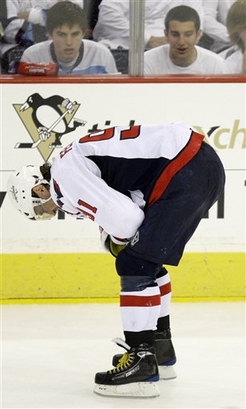It doesn’t take a stat geek to come to the conclusion that second baseman Robinson Cano of the Seattle Mariners is underperforming from what was expected when the Mariners signed him to a ten-year, $240 million deal.
Year one of his tenure in the Emerald City saw a .314/.382/.454 slash line, numbers consistent with his career in BA and OBP, but with a drop in slugging. The 14 HRs of 2014 was disappointing, since he had hit over 25 each of the previous five seasons in the Bronx with the New York Yankees, highlighted by 33 in 2012. And his overall counting numbers were suppressed on an offensively challenged Mariners team.
This year, as July is rapidly approaching, Cano is hitting .248/.284/.346 with just three HR, 29 runs, and 23 RBI. He’s generated -0.1 WAR and isn’t showing signs of improvement.
The month of June has been his worst so far. During the month that you can usually count on seeing “slow starts” turn around, Cano has hit .235/.258/.353 with one HR and seven RBI. He isn’t taking walks, with a BB% in June of 3.4% and he’s striking out at a 19.1% clip, not outrageous in this era, but up significantly over his career pace.
And that’s just looking at the non-stat-geek numbers. Upon going to the stat-geek level, the data becomes even more perplexing.
Before arriving in Seattle, Cano’s ground ball to fly ball ratio had consistently been around 1.5, with the highest of his career being 1.89 in 2012. Since coming to Seattle, his GB/FB has been 2.13 last season and 2.22 so far this season. What does that mean in practical terms? Well, ground balls don’t result in a lot of hits and rarely extra base hits. With Cano hitting two ground balls for every fly ball, his average and power will not go up.
When looking at Pitch Type, it doesn’t appear that pitchers have significantly changed their approach when facing Cano. There is a slight uptick in fastballs thrown to Cano since arriving in Seattle over his last four years with the Yankees, which might indicate his swing is slowing down. And it is worth noting that for the first time since 2008, Cano is below average on runs created off of fastballs.
What is sort of confusing is the fact that Cano’s hard hit percentage is actually up over last season, from 28.5% in 2014 to 32.6% this season, albeit still down from the 38.1% and 38.9% from his last two seasons in New York.
There is some indication that he may be late on pitches, as his lowest batting average is on pulled balls and his highest batting average is on balls hit to the opposite field. But, that could also just be a product of making adjustments against the growing prevalence of shifted infields in MLB.
He has dropped off pretty dramatically against left-handed pitching, hitting .216 this year compared to his .288 career average. On a team built on platoons, the prospect of the highest salaried everyday player being so ineffective against lefties is a bit daunting.
Could it be that he isn’t recognizing pitches as well as in the past and he’s just swinging at everything, thus accounting for the drop off in walks and the rise in strikeouts? Well, the numbers don’t bear that out.
In 2015, Cano is actually swinging at fewer pitches outside the strike zone. Whereas in 2011 with the Yankees, Cano was a fairly free swinger, swinging at 41.9% of pitches outside the strike zone, his discipline at the plate has gotten progressively better to where he is only swinging at 31.5% of pitches outside the strike zone this year. And, his overall swing rates and contact rates are pretty consistent with his career numbers, which is counterintuitive to his walks and strike out rate.
It’s weird.
With a BABIP (batting average on balls in play) of .287, about 40 points lower than his career numbers, an increase in BA could be coming. On the other hand, the replacement level player in the big leagues has a BABIP right around where Cano’s is now. So, if we are seeing a deterioration of skills at the plate, it might not get much better.
Mariners’ fans might be able to take some solace in the fact that other high profile hitters have been written off for done and bounced back. Most recently, in both 2011 and 2012 (and, well this year too), David Ortiz of the Boston Red Sox appeared finished, only to bounce back with decent second halves.
Perhaps the same may be the case with Cano. But, after a subpar 2014 and a dismal first half to 2015, the prospect of paying a replacement player $25 million a season for the next eight years is looming over an underperforming franchise.
Add The Sports Daily to your Google News Feed!
